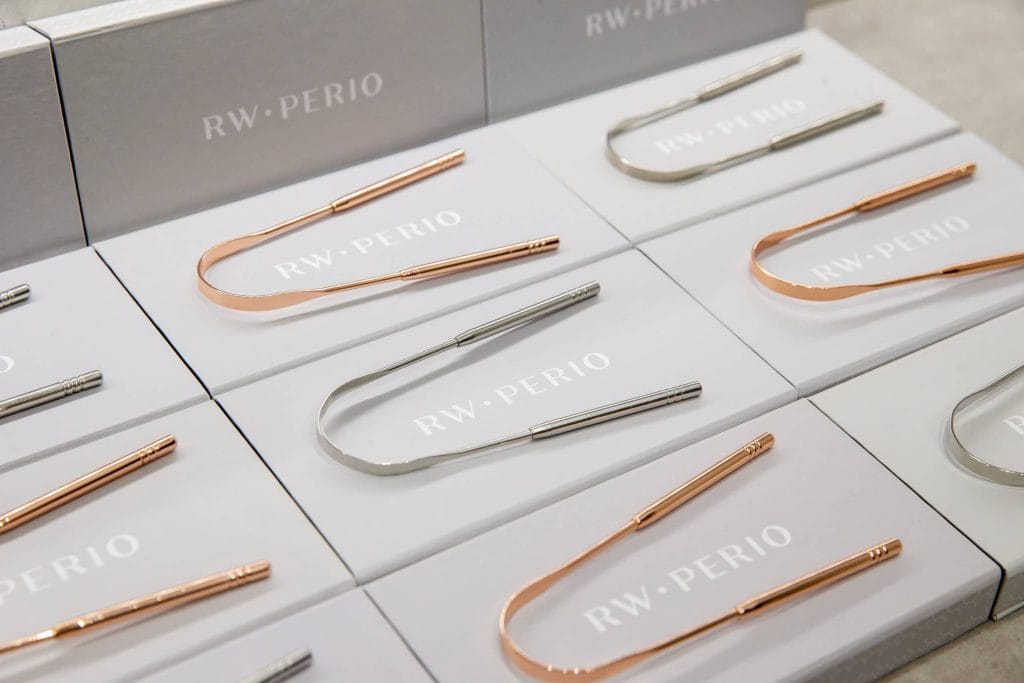
Many of us were taught from a young age that good oral hygiene is crucial for a healthy smile. This meant brushing your teeth twice a day or more. But is there actually such a thing as brushing your teeth too much? Surprisingly, over-brushing can do more harm than good. Read on to learn about the top 5 risks of being overzealous with your toothbrush.
Extreme tooth brushing can lead to:
1. Tooth Wear
Brushing too aggressively or too frequently can actually wear away your tooth enamel over time. This enamel is the outer protective layer of your teeth. Once enamel wears away, the next layer of the tooth called dentin gets exposed. Dentin is much softer and more porous than enamel. This means it provides less protection against external substances that can irritate the inner tooth and cause pain. Dentin contains thousands of tiny tubules leading to the inner dental pulp that register hot, cold and pressure sensitivities. Without the enamel barrier, these sensitivities are heightened.
Loss of enamel also leaves teeth prone to cavities and tooth decay. Enamel has a crystalline structure that helps prevent bacteria from adhering to teeth. Without it, bacteria can start to penetrate into micro holes in the exposed dentin, raising your risk of cavities, tooth infections and decay. According to the British Dental Association, up to 30% of adults display signs of tooth wear caused by over brushing.
2. Gum Recession
Excessive brushing can also rub away at your gums, leading to gum recession. This is when your gums gradually pull away from your teeth, exposing more tooth surface and root. Receding gum puts you at greater risk for decay and increased sensitivity. About 8% of UK adults have some form of gum recession, reports the Adult Dental Health Survey.
Find out more: Is Gum Recession Reversible?
3. Sensitivity
Worn enamel and gum recession leave microscopic cracks and openings in your teeth for hot, cold, sweet, or acidic foods and liquids to penetrate. This leads to increased sensitivity and pain when eating and drinking. To help reduce sensitivity from worn enamel and receding gums, try using a sensitivity toothpaste containing ingredients like potassium nitrate or arginine to block pain transmission. Avoiding very hot or cold foods can also help, as can getting any cavities filled quickly before they reach the nerve.
4. Damaged Tooth Roots
The roots of your teeth lie below your gum line. Brushing too forcefully near the gums can actually scrub away the root surface material. This causes increased sensitivity and can open you up to infections.
5. Loss of Tooth Structure
Repeated aggressive brushing over time can cause your teeth to become loose, thin, or grooved. This overall loss of tooth structure not only damages aesthetics but can also lead to dental issues like decay, cracking, or the need for crowns or implants.
Read about: Gum Aesthetics 101: Everything You Need to Know About Achieving a Perfect Smile
Protect Your Smile From Too Much Tooth Brushing
The good news is that by adjusting your brushing habits, you can avoid the dangers of overbrushing. Be sure to use a soft-bristled toothbrush and brush gently using small, circular motions or better still use an electric toothbrush but only hold it on the tooth rather than moving it around (let it do the work for you). Opt for brushing just twice per day for two minutes each time. And see your dentist regularly, as they can catch early signs of wear and tear.
If you think you may be overbrushing, don’t wait. Give our periodontist in London a call today to discuss your oral health. We’re here to help you achieve better brushing habits and your healthiest smile.
- Why are my gums receding?
- What can I do about receding gums?
- What can I do about my gummy smile?
- When is crown lengthening necessary?
Why are my gums receding?
Gum recession happens when the gum tissue has receded and lowers its position on the tooth, exposing the roots of the teeth.
You may be at more risk of recession depending on the position of your teeth in the jaw as well as the thickness of your gum and bone. The recession itself may be caused by plaque, overly aggressive brushing or trauma from e.g. lip/tongue piercings.
Gum recession needs attention and the first step is to consult your dentist or a gum expert on whether further measures need to be taken to stop or correct the recession.

What can I do about receding gums?
If you are only mildly affected by receding gums, that’s great! Catching it early means that it may just be a case of monitoring it. However, either way, the cause of the recession must be established and corrected. This may involve a modification of your brushing technique or gum disease treatment.
If further treatment is required, the one recommended will depend on the aims of the treatment. The most common treatment is the free gingival graft, which involves taking a small piece of tissue from the roof of your mouth (palate) and applying it as a graft to an area that is deficient. This thickens the gums, helps facilitate oral hygiene, and helps prevent further recession. This is often used for lower front teeth.
If aesthetics are of concern, then the gum is often moved to cover the recession. This may or may not be combined with a gum graft, depending on the thickness of the existing gum. Advances in the application of microsurgical techniques have led to improved success, less post-operative discomfort, and reduced healing times.
What can I do about my gummy smile?
A gummy smile describes excessive gum display when smiling. The teeth can also look smaller than their expected size. It is not uncommon and shouldn’t be ignored, especially if it affects your self-confidence and happiness.
There are many reasons for a gummy smile, but it is largely due to the way your teeth, gums, and jaw have developed.
A gummy smile can be treated using a ‘gum lift’ or crown lengthening procedure. This lengthens your teeth and reduces the amount of gum on show, thereby improving your smile.
This procedure is also suitable for teeth that are extensively broken down and require a more sound tooth structure above the gum line to allow for a restoration/crown to be placed.
When is crown lengthening necessary?
Occasionally, there is not enough tooth surface above the gum line to support a crown; this is when crown lengthening is necessary.
Crown lengthening removes gum and bone tissues, exposing more of the tooth to allow room for the new crown. Crown lengthening is sometimes also a cosmetic procedure option for patients with a “gummy smile,” which means you have too much gum tissue around your teeth.

Check out our other articles if you want to learn more about your dental care. Or contact us if you have any questions or feedback, or would like to book an appointment.
Learn whether gum recession is reversible by experts at RW Perio
Gum Recession: Causes and Reversibility
Gum recession is a common dental issue that occurs when the gum tissue surrounding the teeth begins to pull back; exposing more of the tooth’s root. This can lead to sensitivity, tooth decay, and even tooth loss if left untreated. Read further to learn about the causes of gum recession. We’ll discuss the periodontal methods of treatment that can help to reverse this condition.
Causes of Gum Recession
Several factors can contribute to gum recession. The most common causes include:
Brushing too hard
Aggressive brushing can cause the gums to recede, as the bristles can irritate and damage the gum tissue.
Periodontal disease
Also known as gum disease, this bacterial infection can cause the gums to pull away from the teeth, leading to recession.
Genetics
Some people may be more prone to gum recession due to genetic factors.
Crooked teeth
Misaligned teeth can place extra stress on the gums, causing them to recede.
Hormonal changes
Hormonal changes in the body, such as pregnancy, can cause the gums to become more sensitive and prone to recession.
Tobacco use
Smoking or using other forms of tobacco can increase the risk of receding gums.
Periodontal Methods of Treatment
If you are experiencing gum recession, it is important to seek treatment from a periodontist – a dentist who specialises in the treatment of the gums and bones that support the teeth. There are several periodontal methods that can be used to help reverse this and prevent further damage.
Non-Surgical Treatment: This is a non-surgical procedure that involves removing plaque and tartar from the teeth and smoothing out the roots to help prevent bacteria from re-establishing themselves.
Gum Grafting: In this procedure, a small amount of gum tissue is taken from the roof of the mouth and used to cover the exposed roots of the teeth. This can help to protect the roots from decay and sensitivity.
Bone Grafting: In cases where the bone has been lost due to periodontal disease, bone grafting can be used to rebuild the bone and provide a foundation for the gums to reattach to the teeth.
Surgery: In some cases, surgery may be necessary to repair the damage caused. The type of surgery will depend on the severity of the recession and the overall health of the patient.

Aggressive brushing, periodontal disease, genetics, and tobacco use can cause gum recession, a common dental issue. A periodontist and proper treatment can reverse this condition and prevent further damage to the teeth and gums.
If you are experiencing symptoms of this condition, it is important to seek treatment as soon as possible to prevent the condition from worsening.
Follow us on Instagram to see all our before and after posts regarding receding gum treatments!
View this post on Instagram

